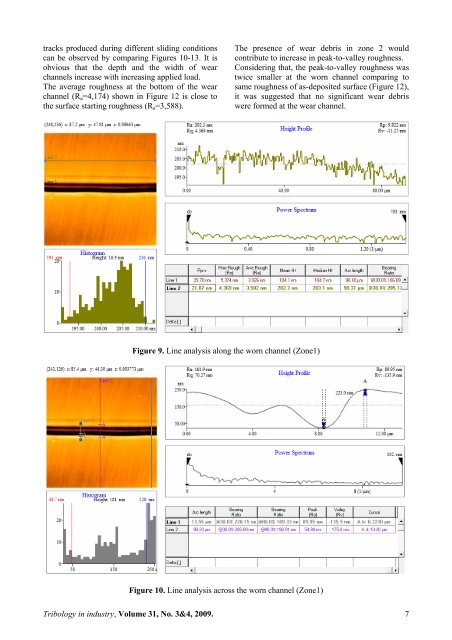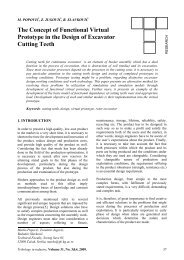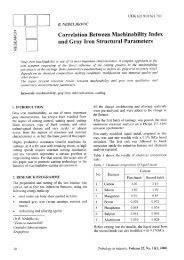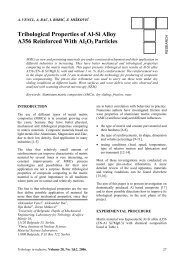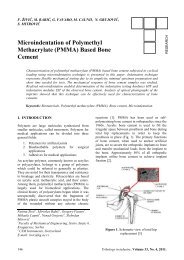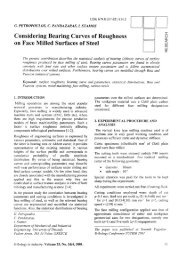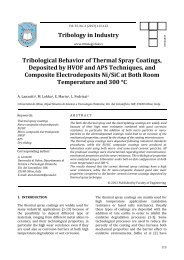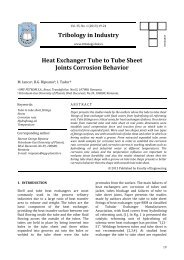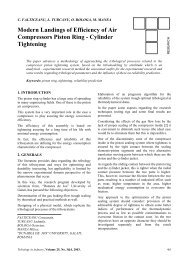Influence of Load and Sliding Speed on Friction Coefficient of IBAD ...
Influence of Load and Sliding Speed on Friction Coefficient of IBAD ...
Influence of Load and Sliding Speed on Friction Coefficient of IBAD ...
- No tags were found...
Create successful ePaper yourself
Turn your PDF publications into a flip-book with our unique Google optimized e-Paper software.
tracks produced during different sliding c<strong>on</strong>diti<strong>on</strong>scan be observed by comparing Figures 10-13. It isobvious that the depth <str<strong>on</strong>g>and</str<strong>on</strong>g> the width <str<strong>on</strong>g>of</str<strong>on</strong>g> wearchannels increase with increasing applied load.The average roughness at the bottom <str<strong>on</strong>g>of</str<strong>on</strong>g> the wearchannel (R a =4,174) shown in Figure 12 is close tothe surface starting roughness (R a =3,588).The presence <str<strong>on</strong>g>of</str<strong>on</strong>g> wear debris in z<strong>on</strong>e 2 wouldc<strong>on</strong>tribute to increase in peak-to-valley roughness.C<strong>on</strong>sidering that, the peak-to-valley roughness wastwice smaller at the worn channel comparing tosame roughness <str<strong>on</strong>g>of</str<strong>on</strong>g> as-deposited surface (Figure 12),it was suggested that no significant wear debriswere formed at the wear channel.Figure 9. Line analysis al<strong>on</strong>g the worn channel (Z<strong>on</strong>e1)Figure 10. Line analysis across the worn channel (Z<strong>on</strong>e1)Tribology in industry, Volume 31, No. 3&4, 2009. 7


